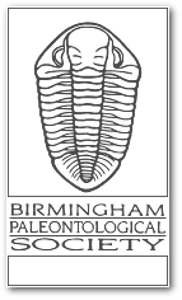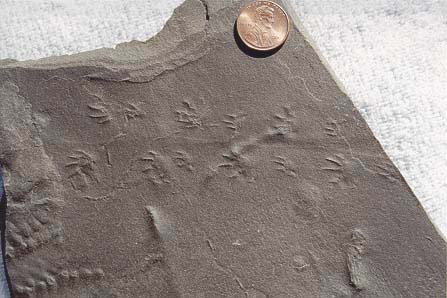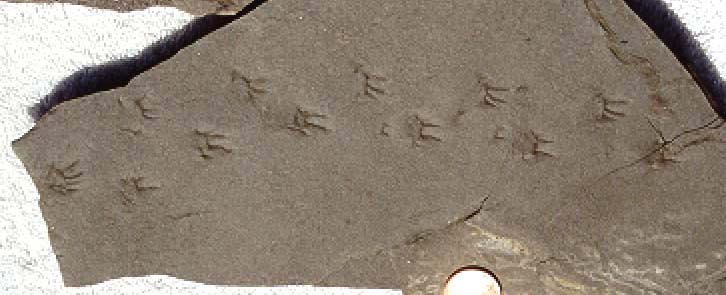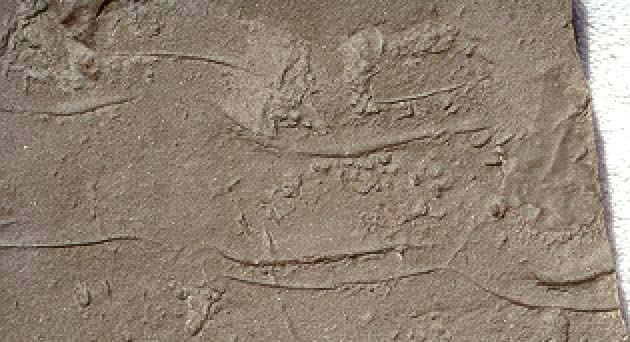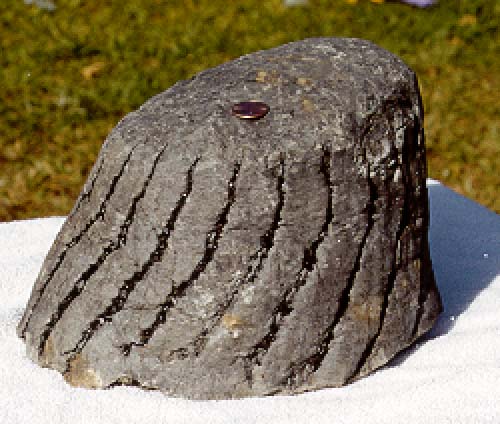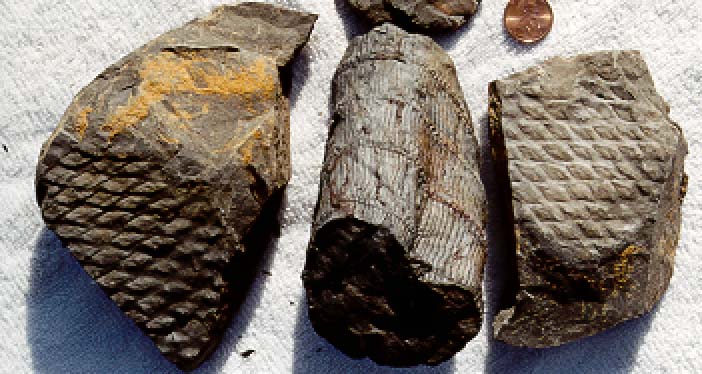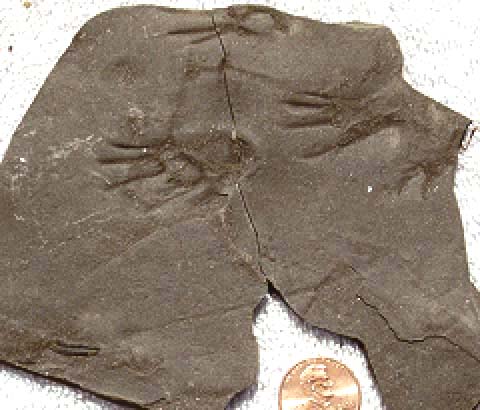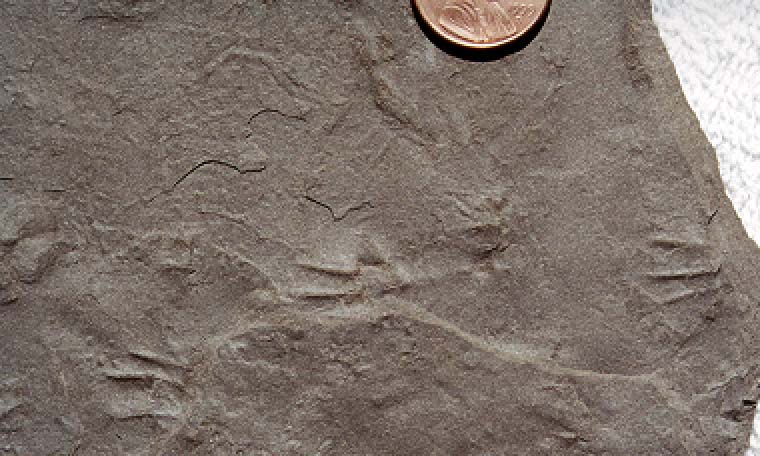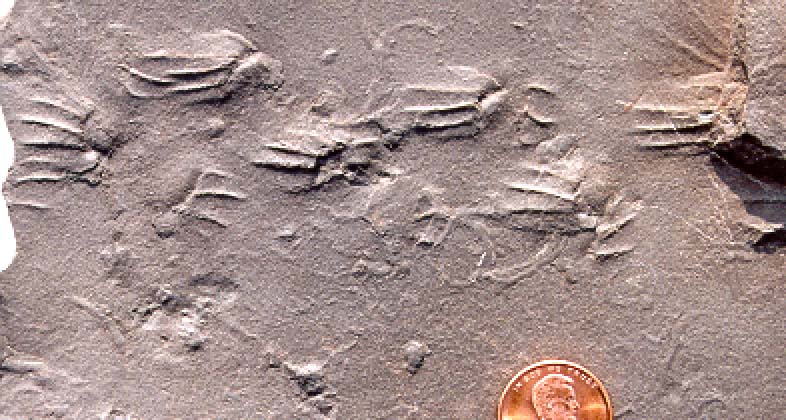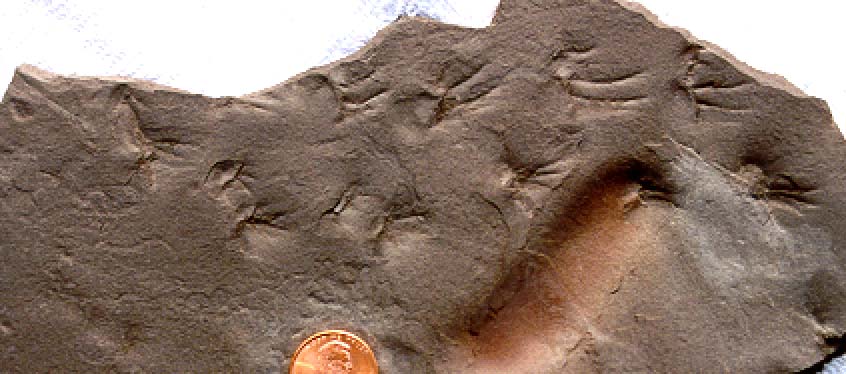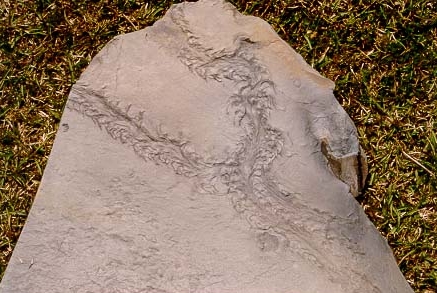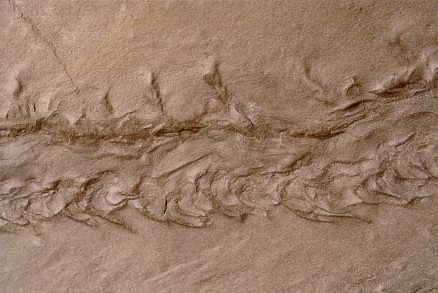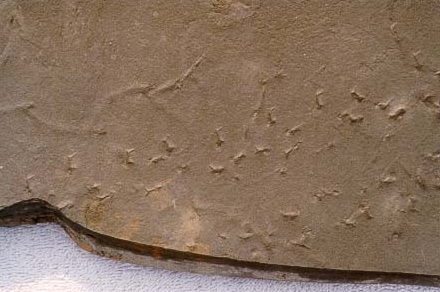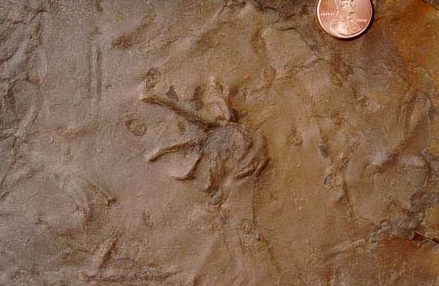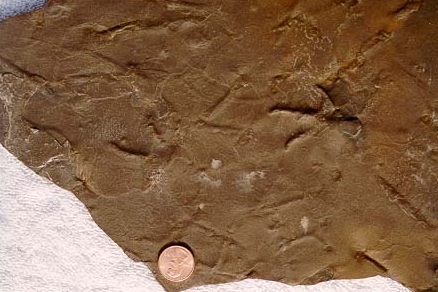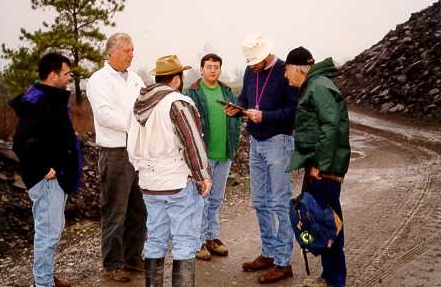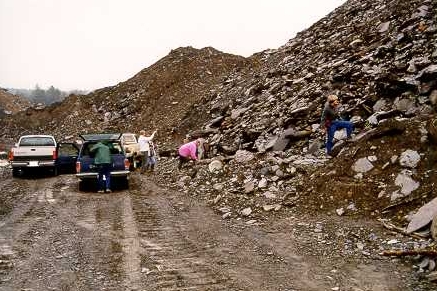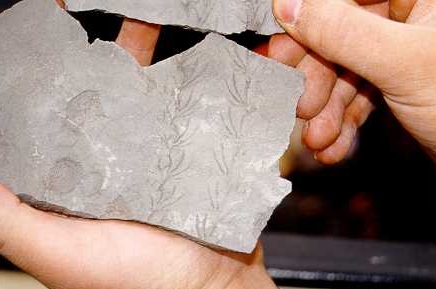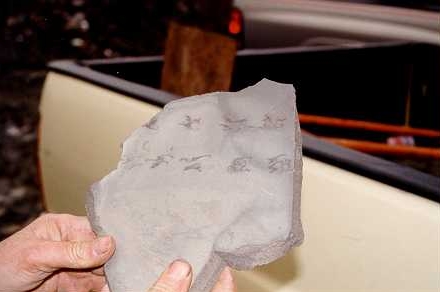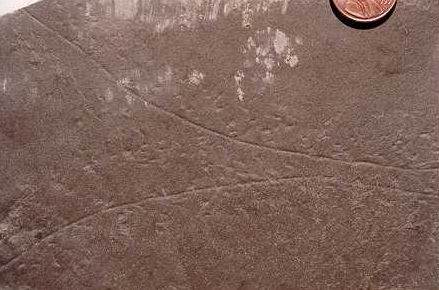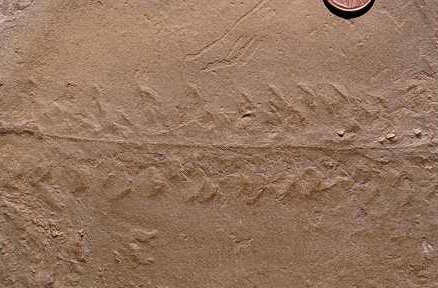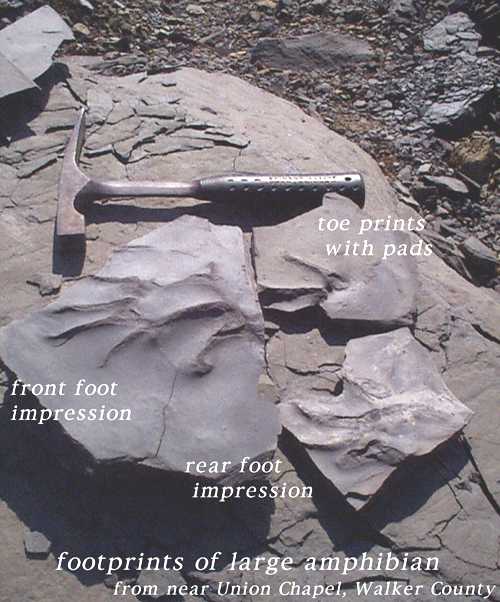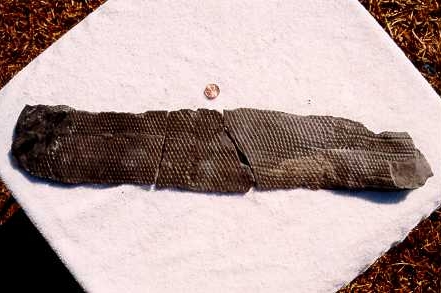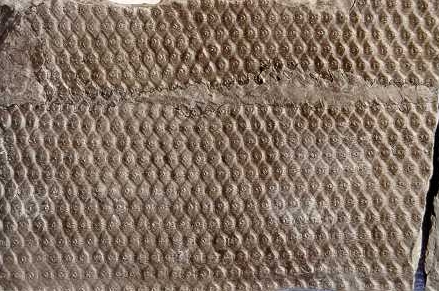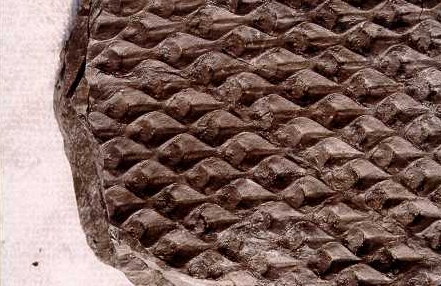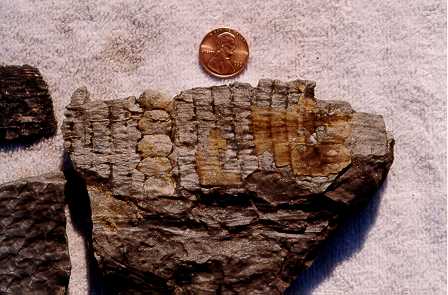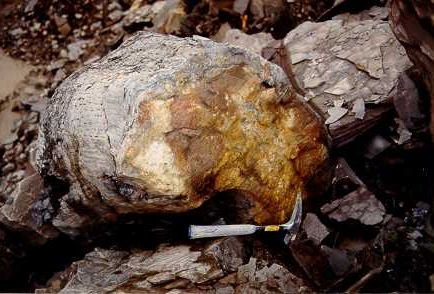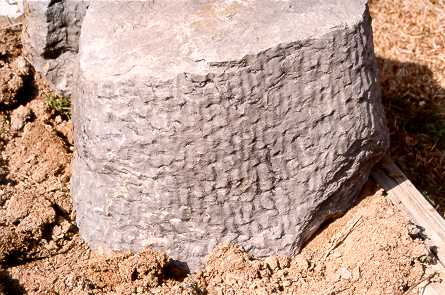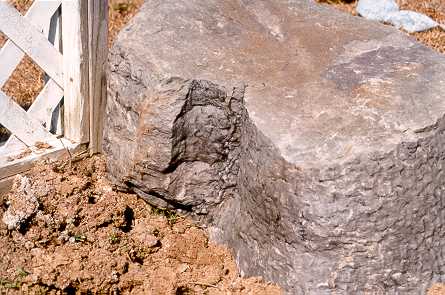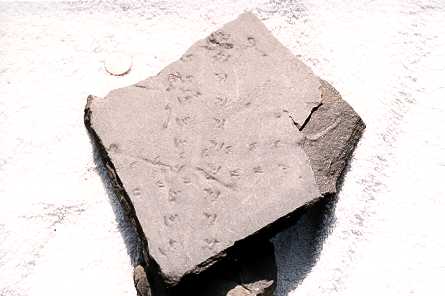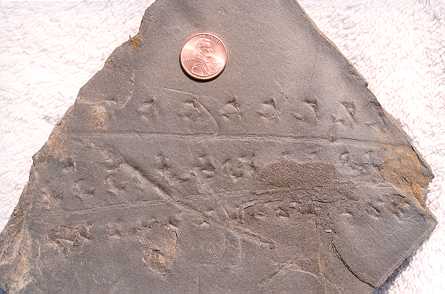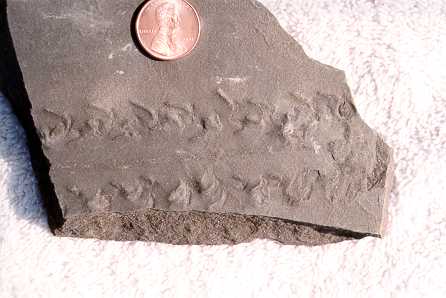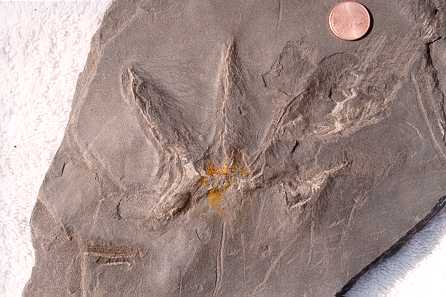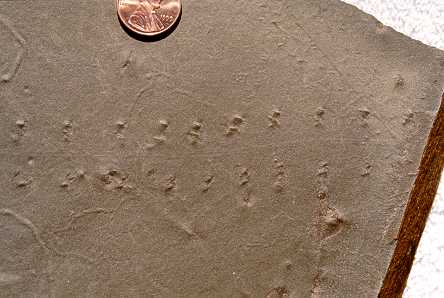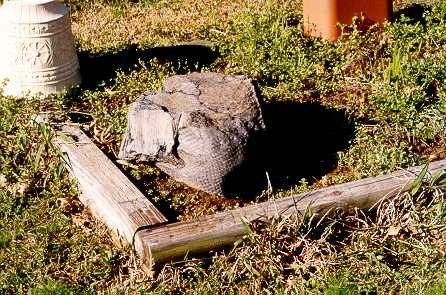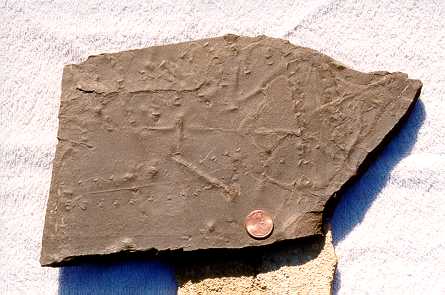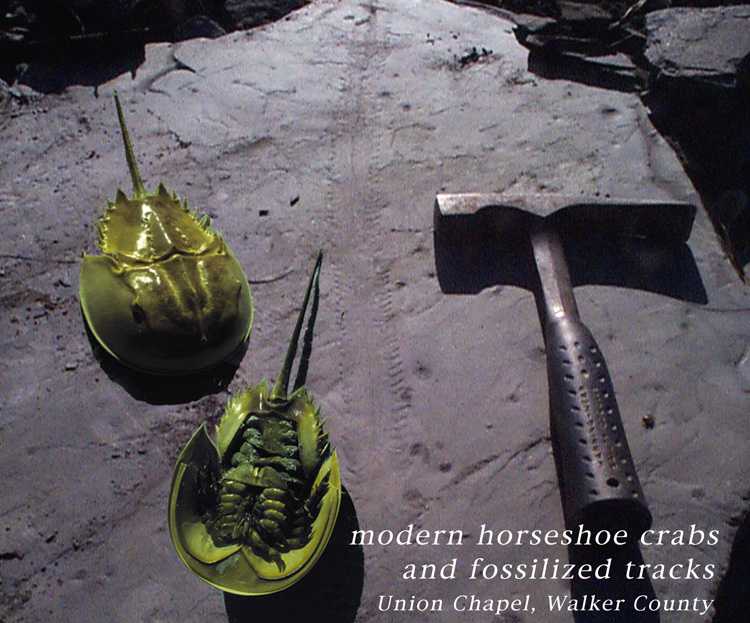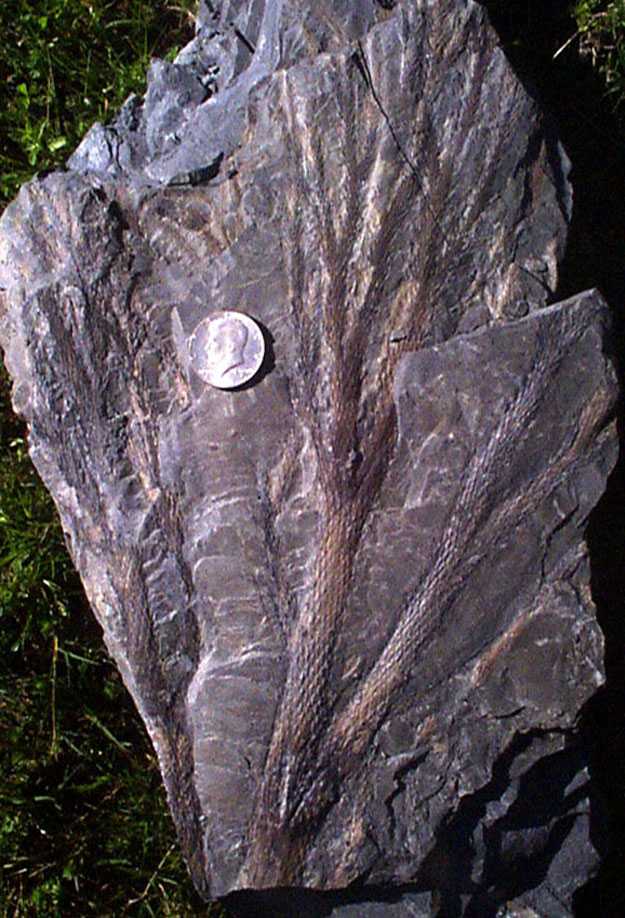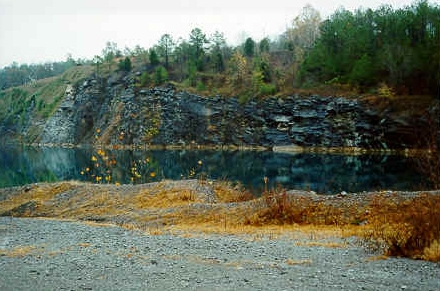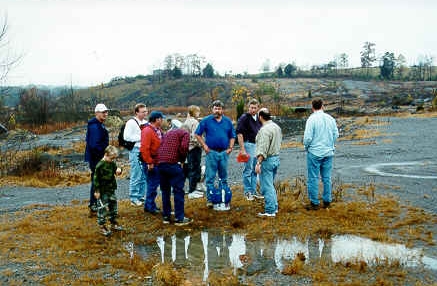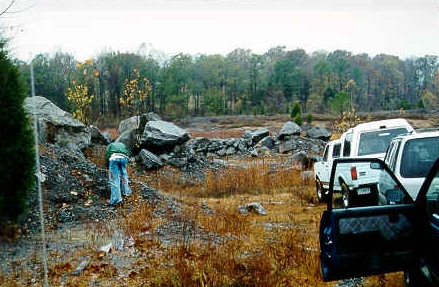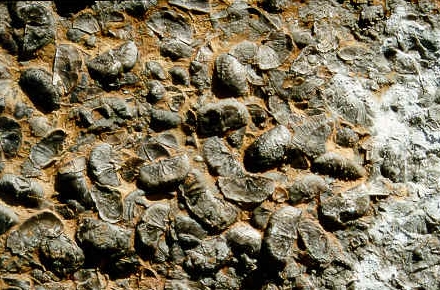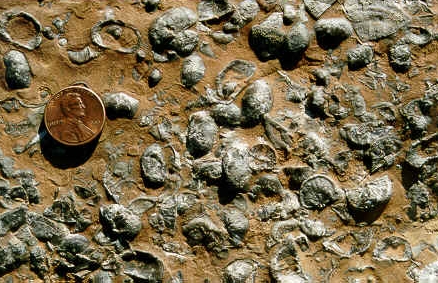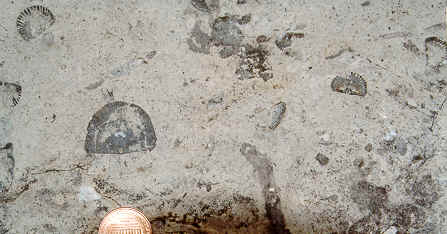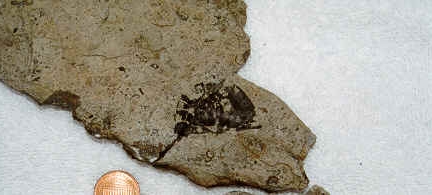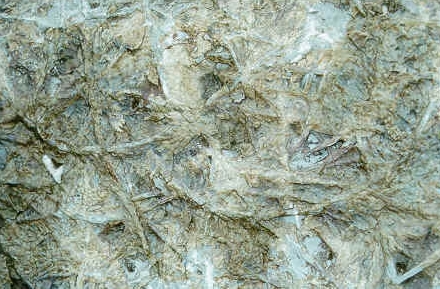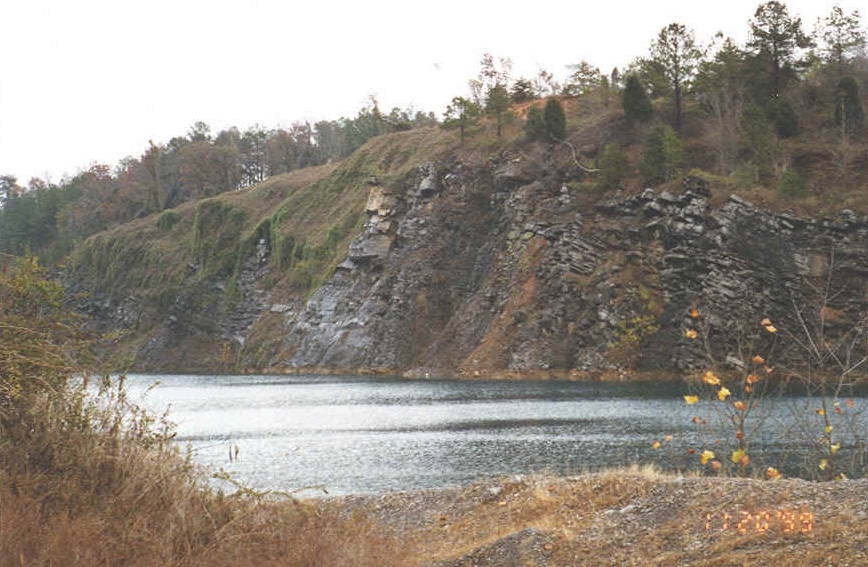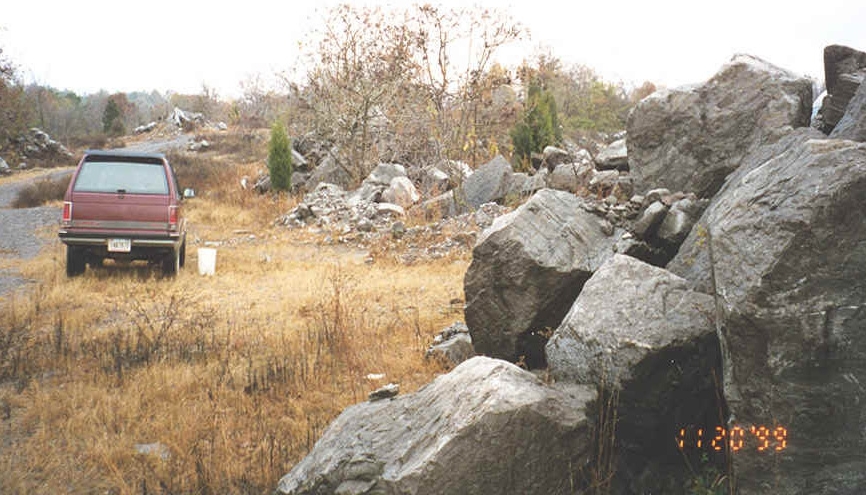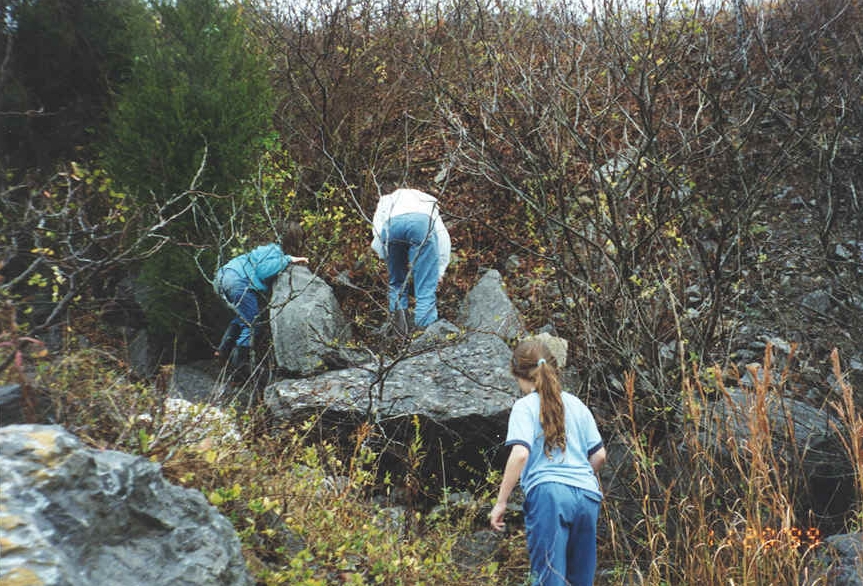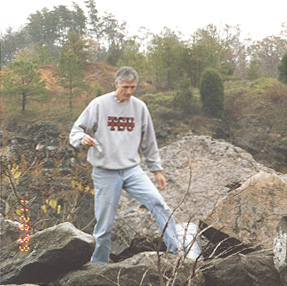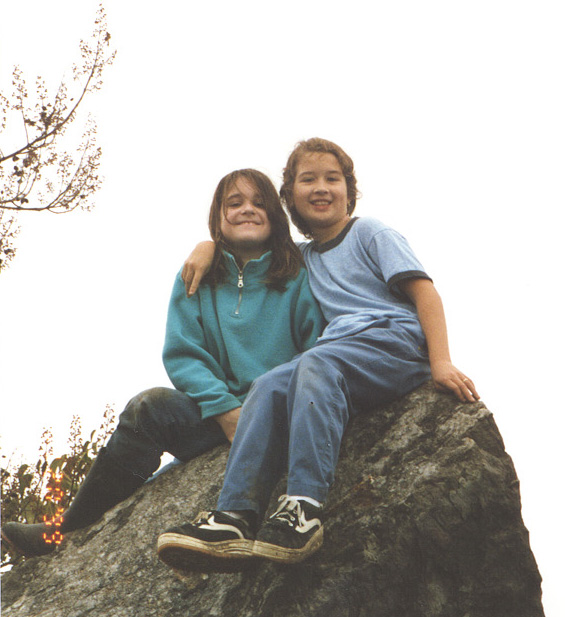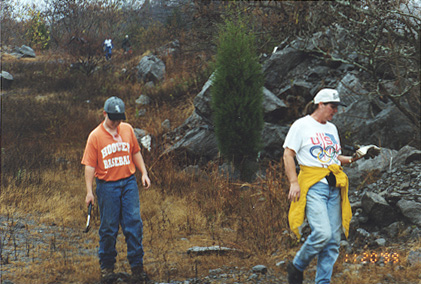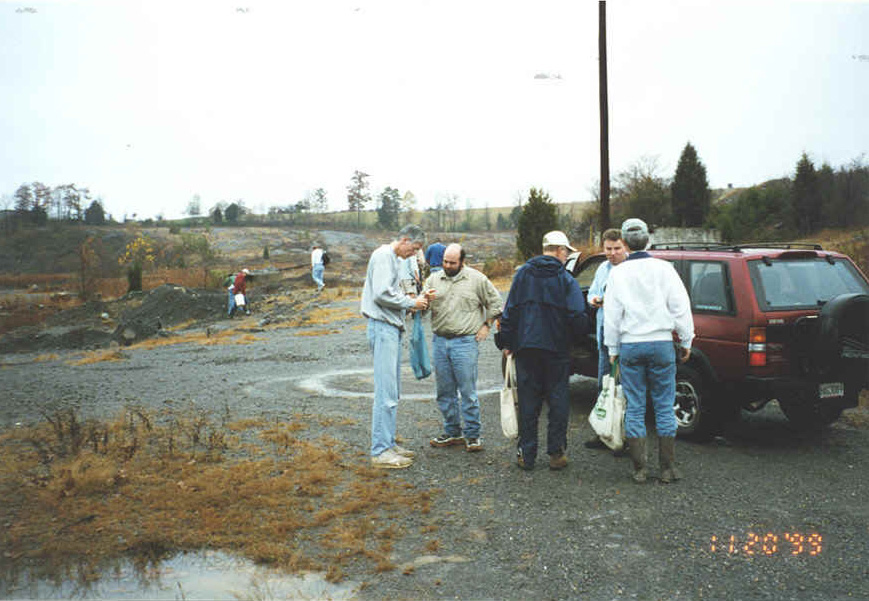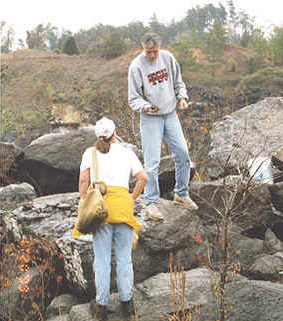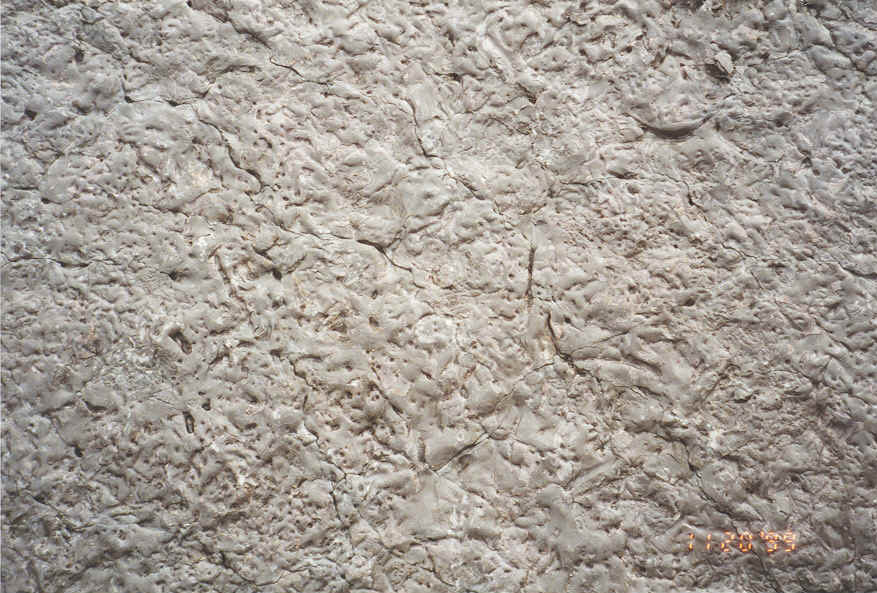August 19, 2000 - The BPS Track Meet

General
On August 19, the Birmingham Paleontological Society (BPS), the Alabama Museum of Natural History, and the Geological Survey of Alabama will hold an all day session in Smith Hall at the University of Alabama to photograph and label Pennsylvanian age trackways collected from the Union Chapel Mine in Walker County, Alabama. The Alabama Museum of Natural History will host the event and provide refreshments and lunch to everyone involved. Persons with tracks/trackways are asked to arrive at Smith Hall around 9:00 am to begin set up for photographing and labeling. The photography, specimen labeling, and data recording will last until around 5 pm Saturday afternoon. From 11:00 to 12 noon, there will be a break for a series of short talks that will address the group on the geology of the Union Chapel Mine and the significance of collecting these Paleozoic trackways.
This "Track Meet" is a unique opportunity to document most of the trackways that have been taken from the Union Chapel Mine, collected mainly during the year 2000. The purpose of this session is:
- To compile a photographic record of the Union Chapel Mine trackways,
- To document the owners of tracks/trackways in the event a researcher needs to study these specimens in the future. A photographic catalogue is planned for the publication of this data and will be titled BPS Monograph # 1.
- To permanently label all specimens collected at the Union Chapel Mine. These labels will be affixed to the back side of the specimen, not interfering with the track/trackway.
It is requested that people bring only tracks/trackways from the Union Chapel Mine for the August 19 Track Meet. Also, plant fossils from the Union Chapel Mine should not be brought to be photographed at this session. There will a separate photo session for plant fossils collected at the Union Chapel Mine. Likewise, trackways from other Alabama locations collected by the BPS would also be the subject of a future photo session.
It is also requested that each specimen brought to the Track Meet for photography be thoroughly cleaned before unloading the specimen at the registration table. This cleaning should be done by the specimen(s) owner before arriving at Smith Hall. If calcite scale is present, a bit of vinegar poured onto the shale for 10-15 seconds may remove some of it, if the vinegar is gently worked over the surface with a soft toothbrush. Be extremely gentle with the specimen because vigorous scrubbing the specimen with water/vinegar will destroy the track/trackway.
Agenda
9 am to 11:00 am: Registration, triage, preparation of permanent labels, photography
11:00 am to 12:00 noon: Speakers
- Ed Hooks, Alabama Museum of Natural History:
- Welcome
- The Importance of the Amateur Paleontologist
- BPS Display Case
- Kathy Twieg:
- Address from the President to the Birmingham Paleontological Society
- BPS Monograph Series
- Andrew K. Rindsberg, Geological Survey of Alabama:
- Donation of Pennsylvanian Trackways to Geological Survey of Alabama for their Educational Outreach Program and Permanent Collection; Ethics in Collecting, Trading, and Selling Fossils
- Jack Pashin, Geological Survey of Alabama:
- Geology of the Pottsville Formation and its relation the Union Chapel Mine
12:00 noon to 1:00 p.m.: Lunch (provided by BPS)
1:00 p.m. to 5:00 p.m.: Photography and preparation of permanent labels
Registration, Triage, and BPS Data Base
Upon arriving at Smith Hall at the beginning of the Track Meet Saturday morning, each person will be greeted at the registration desk set up outside the front of Smith Hall. Labeling and filling out data base forms will also be done outside the front of Smith Hall. In the event of inclement weather, registration, triage, data base work, and labeling will all take place inside Smith Hall, on the 1st floor. Volunteers will be available to help specimen owners unload and carry specimens to Smith Hall from the parking area. If a person has specimens for the photo shoot, the person should be registered by a BPS host at the front table. Upon signing in, the person will present his/her specimens to be photographed. Andy Rindsberg, Geological Survey of Alabama, will evaluate each sample for photography priority. Those track/trackway specimens of the highest quality will be given a red dot and receive first priority for the photo shoot. The second quality tracks/trackways will be given a blue dot and will be photographed later if time allows in the afternoon. Specimens of minor value to this effort will be given a green dot, and if the owner prefers, may be donated to the Geological Survey of Alabama for their educational outreach program. A depot for such specimens will be marked. Conversely, there will be trackways that the Alabama Museum of Natural History or Geological Survey of Alabama consider of high value to scientific research. If this is the case, Andy will place a yellow dot on the specimen and request donation of the specimen to the Museum or Survey for their permanent collections, again, at the discretion of the owner. In addition, Ed Hooks (Alabama Museum of Natural History) will request that several of the most important trackways be displayed in the BPS display case in Smith Hall for a 4-6 month duration, after which time the specimens will be returned to their owners. These specimens will also receive a yellow dot.
Once Andy Rindsberg has graded track/trackway specimens with red, blue, or green dots, a Track Meet volunteer will give the owner of the specimen(s) to be photographed a series of unique numbers, one number for each rock specimen. Next, the volunteer will give the owner a data sheet on which the owner shall list the necessary data for each track/trackway. The information on this data sheet will be:
- Collector’s name
- Taxon (ichnogenus and ichnospecies, if known)
- Date collected (month/year)
- Location collected (Union Chapel Mine)
- County location (Walker County, Alabama)
- Geologic formation (Pottsville Formation)
- Geologic Age(Pennsylvanian)
- Unique sample number (e.g. UCM –1)
All that the specimen owner needs to write on the data sheet(s) are: his/her name, specimen name, and date collected. These data sheets will be pre-printed with the standard site information (categories d-h).
Labeling
After the data sheet has been filled out, the owner with the assistance of a Track Meet volunter, will move the track/trackway specimens to a table where permanent labels are being attached to the rock. The rock will be turned over and a permanent label will be affixed to the back side of the rock by a Track Meet volunteer. This label will be a postage stamp-sized white label, and another volunteer will take the data sheet and print the necessary information on the permanent label on the rock with a black indelible pen. The permanent label on the rock should read:
- Unique sample number
- Taxon (ichnogenus and ichnospecies, if known)
- Date collected
- Location collected
- County location
Finally, the volunteer will give the owner a temporary label to be attached to the specimen with two way cellophane tape. All that is written on the temporary label is the specimen’s unique sample number within the range of UNC-001 to UNC-500. This temporary label will be attached to the specimen for the photograph; after which it may be discarded. However, it is critical that this paper label stay attached to the rock specimen until after the track/trackway is photographed.
Transport of Specimens to the 2nd Floor for Photography and Data Input
Another Track Meet volunteer will assist the owner in transporting the specimens to the 2nd floor of Smith Hall for photographing. There are two large classrooms on the 2nd floor of Smith Hall where the specimens, in their boxes, must be staged prior to the photo shoot. In one classroom, a camera table and artificial lighting have been arranged for the photo session. Once the specimens have been photographed, the owner will place the specimens back in the staging area and attach a "post-it" to the specimen box indicating that photographs have been taken.
In another classroom where the specimens will also be also staged, Prescott Atkinson will be using a computer to input information about the samples into the BPS database.
The owner will take the data sheet to Prescott to enter specimen data in the database. Track Meet volunteers will assist in transporting the rock specimens downstairs and back to the owner’s vehicles, after the photo session and data input are finished.
There will probably be many tracks that will not brought to the August 19 "track meet". The labeling session at the "track meet" should demonstrate to everyone the importance of labeling the Union Chapel Mine specimens and how everyone should label their additional specimens not brought to the August 19 Track Meet.
Photo Session
Ricky Yanaura, Staff Photographer for the University of Alabama, has provided technical assistance to the Alabama Museum of Natural History and the BPS on how to best photograph the track/trackway specimens. He recommends using 35 mm print film, in a camera mounted on a tripod in a large classroom on the second floor of Smith Hall. A camera table will be positioned in one corner of the classroom and serve as a stationary base to place the rock specimens for photography. The camera can be raised or lowered depending on the size of the specimen. Ricky will supply all artificial lighting and a series of lighting reflectors to capture the best possible lighting contrast for the rock specimen. The Alabama Museum of Natural History will furnish all the film and pay for the film developing. Ron Buta will be the photographer for the track meet and will use a Nikon 35 mm camera with a macro lens. Ron will have a volunteer to assist him throughout the entire photo session. Ron and Ricky will get together a few days in advance to practice a dry run for the lighting and camera table set up on the second floor of Smith Hall.
Each specimen may be lightly sprayed with water before the photo shoot to enhance rock contrast in order to see the track/trackway more clearly. A metric bar scale will be placed next to each specimen for each photograph. The temporary label shall be arranged properly on the rock specimen for the photo shoot.
Others are welcome to also photograph track/trackway specimens with their own cameras/digital cameras while the specimens are being photographed for the BPS Monograph by Ron Buta.
Security
Security will be provided by volunteers to ensure that the general public does not enter the museum while the museum is closed. In addition, the BPS will provide volunteers to ensure the security of all track/trackway specimens during the August 19 Track Meet.
Media
The Alabama Museum of Natural History has invited the local media to cover the August 19 Track Meet.
Volunteers
Currently, 13 persons have volunteered to work all day at the Track Meet. Twelve volunteers are needed at a very minimum to operate this event. Anyone who would like to help with the Track Meet is strongly encouraged to volunteer. The BPS and the museum would really appreciate it.
Housekeeping
Two Track Meet volunteers will assist to ensure that the building and grounds of Smith Hall are properly policed for debris, trash, and disposable lunch and refreshment materials. This will be most important if it rains and registration, triage, and labeling have be done inside Smith Hall. These volunteers will also assist with serving lunch.
Lunch, Refreshments
Coffee, drinks, and pastries will be served during the day. Lunch will consist of chicken/sausage gumbo, rice, French bread, and a touch of filé. There will be no charge for lunch or refreshments.
